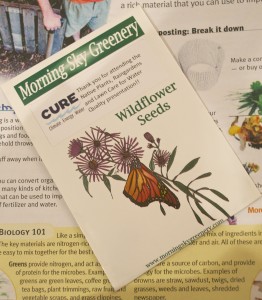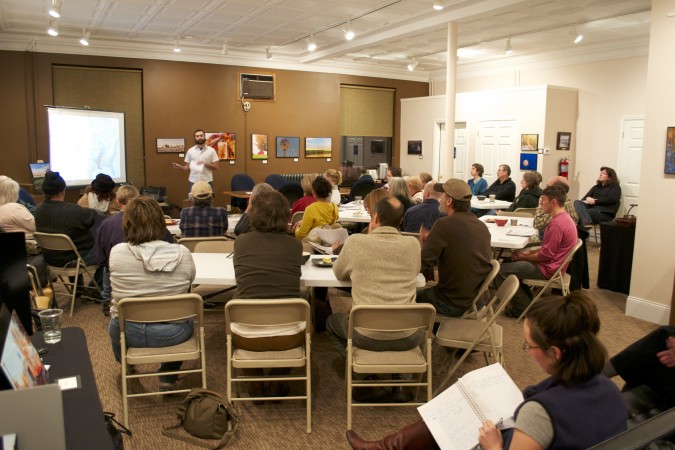Hot soup, warm buns from Carl’s Bakery, and simple informational handouts welcomed 30 people to the K.K. Berge building on a Thursday evening in January. After everyone grabbed a plate of food, CURE introduced Adam Flett from Friends of the Mississippi River to workshop attendees and gave him the floor to present his workshop presentation, “Gardening for a Rainy Day,” during our Native plants, Raingardens and Lawn Care for Water Quality (+winter tips) event. Although the presentation was geared towards urban folks, there was still plenty of information that applied to rural gardeners as well.

Throughout the presentation, Flett highlighted the real threat to Minnesota’s native pollinators and water quality. As Tom Cherveny explained in his blog post about the event, “there is no doubt that the decline of many native pollinators is directly related to the loss of native habitat.” Flett showed how each of us has the power to improve both pollinator habitat and water quality by simply planting native gardens and rain gardens.
How sustainable is your yard?
The good news is that you can begin engaging with water management and conservation practices for your home and yard at the level that you are comfortable with. Workshop participants could integrate practices from either the basic level or intermediate level, or they could jump in at the “whole hog” level. Basic level activities include installing downspouts, washing your car at a car wash, picking up pet waste right away, mowing high (3”) and often, composting leaves and using road salt sparingly and only when the temperature is at least 15 degrees.
Are you already doing that and want to do more? Intermediate-level activities include composting, installing rain barrels, putting in rain gardens and replacing a section of turf with native plantings. The “whole hog” level includes installing a green roof and creating a no-mow lawn by replacing your entire yard with native plants.
6 simple takeaways from the workshop:

- It only takes 1 tsp. of salt to permanently pollute 5 gallons of water! Use less than 4 lbs. of salt per 1,000 sq. ft. surface; that’s all you need.
- Outdoor irrigation is 50% of an average family’s total home water use. Solution? Rain barrels!
- A full rain barrel can weigh 480 lbs.! So make sure your rain barrel is stable and set on level ground.
- Native prairie plants may have roots as deep as 15 feet; deep-rooted native plants require little or no watering.
- Visit BlueThumb.org as your online resource for great tips and information before planning your next native garden or rain garden.
- Lastly and most importantly, before digging, call Gopher State One: 1-800-252-1166!
As Beth Pullan, a workshop participant and member of the Granite Falls community, stated, “Thank you for having a talk on this topic – native plants are so important in our gardens!” Many participants like Pullan left the workshop excited for spring and the chance to begin their next project, whether it be installing a rain barrel, planning a rain garden or native garden and starting a compost bin.


